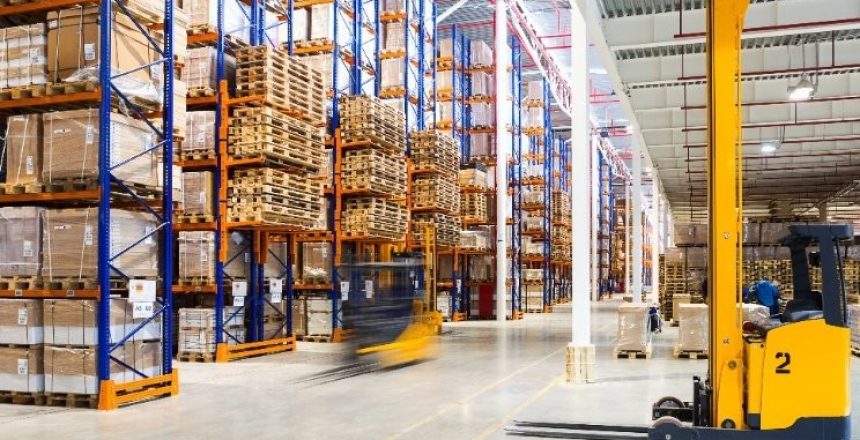Balancing the needs of your eCommerce brand can be challenging, especially when it comes to handling fulfillment. Businesses often find themselves caught between maintaining control through in-house methods and leveraging the benefits of outsourcing with 3PL (third-party logistics) fulfillment services. The best choice for your brand hinges on your specific needs, resources, and growth objectives.
In-house fulfillment offers unparalleled control over your logistics processes, allowing you to customize the customer experience. However, this method often requires a substantial investment in resources, including storage spaces, technology, and labor. On the other hand, utilizing 3PL fulfillment services can optimize operational costs and scale more efficiently to meet market demands.
Many businesses find that 3PL services provide the flexibility to scale operations based on demand fluctuations. This flexibility can be crucial for adapting to changing market conditions and staying competitive. Moreover, outsourcing these tasks allows you to focus on core business activities, potentially driving further growth and innovation.
Deciding Between 3PL and In-House Fulfillment
Choosing between 3PL and in-house fulfillment requires careful consideration of various aspects such as control, cost, and scalability. Each approach offers distinct advantages that can impact your e-commerce business differently.
Understanding 3PL (Third-Party Logistics)
Third-party logistics providers specialize in managing the logistics and supply chain operations of other companies. These external experts handle everything from warehousing and inventory management to order processing and shipping. By partnering with a third-party logistics provider, businesses can benefit from specialized knowledge and resources, leading to significant time and cost savings.
3PL services are also highly scalable. This means they can adapt to your business’s growth without requiring significant investments in new infrastructure. Outsourcing to a 3PL allows e-commerce businesses to focus on core activities like marketing and product development while leaving logistics to the professionals.
The Ins and Outs of In-House Fulfillment
In-house fulfillment offers full control over the entire fulfillment process, from inventory management to delivery. This method is suitable for businesses that prioritize maintaining consistent quality and customization in their order processing. By managing fulfillment operations internally, companies can ensure that their unique standards and practices are adhered to without outside interference.
This approach also allows for greater visibility and direct oversight of inventory levels and shipping schedules. However, it requires a significant upfront investment in warehouse space, technology, and labor. Fixed costs such as storage and staffing can be substantial, but they also provide a predictable expense structure.
Comparing Costs and Investments
The cost structure between 3PL and in-house fulfillment varies significantly. Outsourcing to a 3PL can lower overhead costs and convert fixed expenses into variable costs, depending on your business’s order volume. This flexibility allows for easier scaling as sales fluctuate, potentially reducing overall costs during slower periods.
In contrast, in-house fulfillment requires substantial upfront investments in facilities, staff, and technology. Once established, these fixed costs provide stability but limit flexibility. On-going costs include storage, utilities, and staffing, which can add up quickly, particularly for businesses with seasonal demand or fluctuating sales cycles.
Deciding between these approaches involves assessing your business model, financial situation, and long-term growth plans. Determine which method aligns better with your fulfillment strategy and customer experience goals.
Operational Considerations for eCommerce Brands
To choose the ideal fulfillment strategy for an eCommerce brand, several operational factors must be taken into account. These include building the infrastructure, scalability, customer satisfaction, and risk management.
Building Your Fulfillment Infrastructure
Setting up a fulfillment infrastructure requires investment in warehousing, picking, packing, and shipping capabilities. Whether opting for in-house fulfillment or using a 3PL provider, infrastructure like a warehouse management system (WMS) and inventory management system (IMS) plays a crucial role.
In-house setups necessitate purchasing equipment and employing staff for efficient order fulfillment. Conversely, 3PL warehouses come equipped with more advanced logistics and storage spaces, reducing the need for capital expenditure.
Assessing Scalability and Flexibility
Scalability is vital for eCommerce brands anticipating growth. In-house fulfillment may struggle to scale without substantial financial and logistical investments. Seasonal demand fluctuations also pose challenges; a sudden surge might lead to stockouts or overstock situations.
On the other hand, 3PL services offer flexible, scalable solutions by managing varying volumes efficiently. Their technology integration and large networks with carriers ensure that brands can adapt quickly to market demands and maintain delivery efficiency.
Enhancing Customer Satisfaction and Brand Loyalty
Customer satisfaction hinges on timely and accurate order fulfillment. In-house control allows businesses to personalize the unboxing experience, adding branded packaging and personalized touches that enhance customer loyalty. Clear communication and efficient customer service are easier to manage in-house.
Outsourcing with a 3PL might reduce the direct control over these aspects but can improve speed and accuracy through their expertise. Ensuring consistent communication with the 3PL provider is crucial to maintaining high customer satisfaction levels.
Managing Risks and Challenges
Risk management involves addressing potential issues like labor shortages, shipping delays, and inaccurate order picking. In-house operations depend heavily on staffing and are more vulnerable to disruptions.
Using a third-party provider delegates these risks and challenges to eCommerce fulfillment experts who possess contingency plans and specialized knowledge. Yet, this dependency may lead to challenges if the provider fails to meet expectations.
Both in-house and outsourced models have unique risks and must be assessed based on individual business needs. Ensure robust problem-resolution mechanisms to maintain efficient operations.
In summary, whether an eCommerce business chooses in-house fulfillment or 3PL services, understanding these operational considerations will help in making a more informed decision closely aligned with strategic goals and customer expectations.
Conclusion
Choosing between in-house fulfillment and 3PL logistics hinges on a company’s specific needs. For businesses with high volumes and complex logistics, a 3PL provider can offer scalability and expertise. In-house fulfillment may be more suitable for companies seeking greater control and customization. Evaluating factors like cost, technological capabilities, and long-term goals helps in making the right decision.



